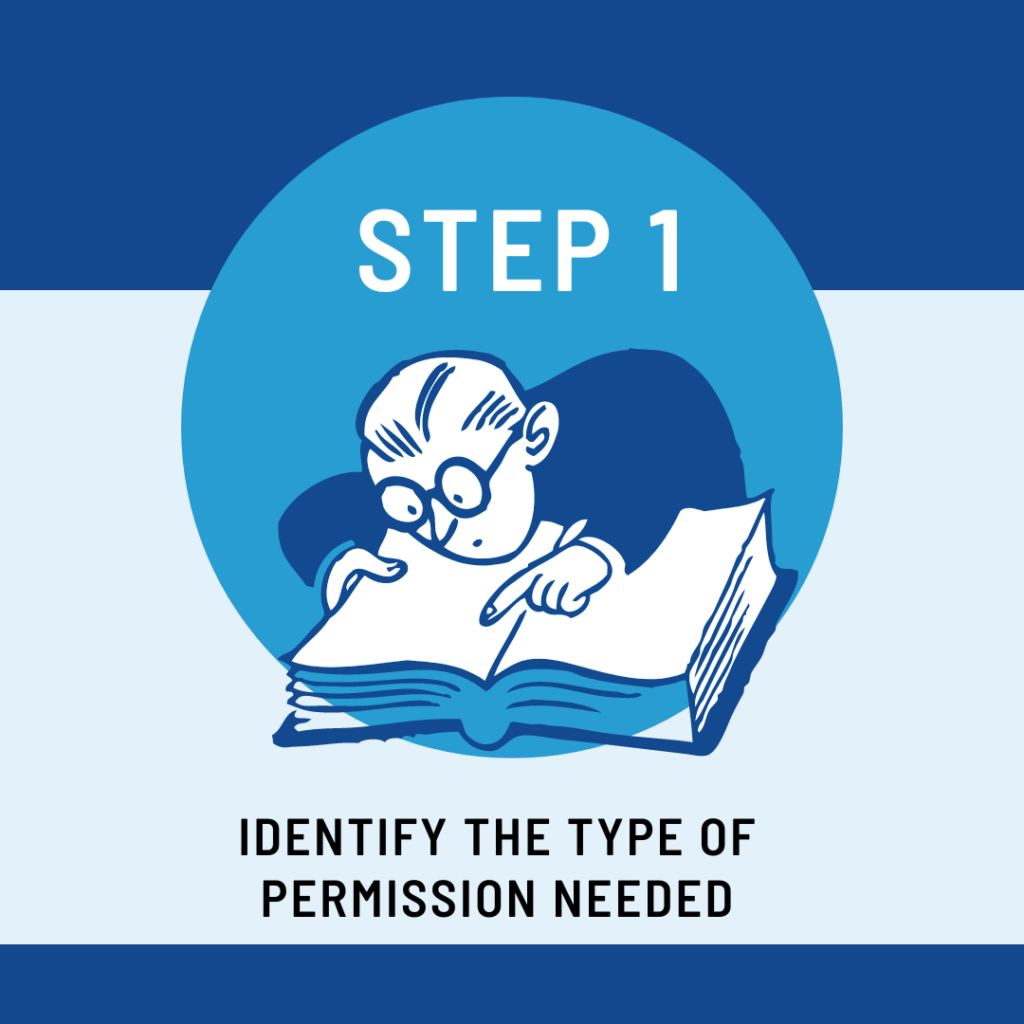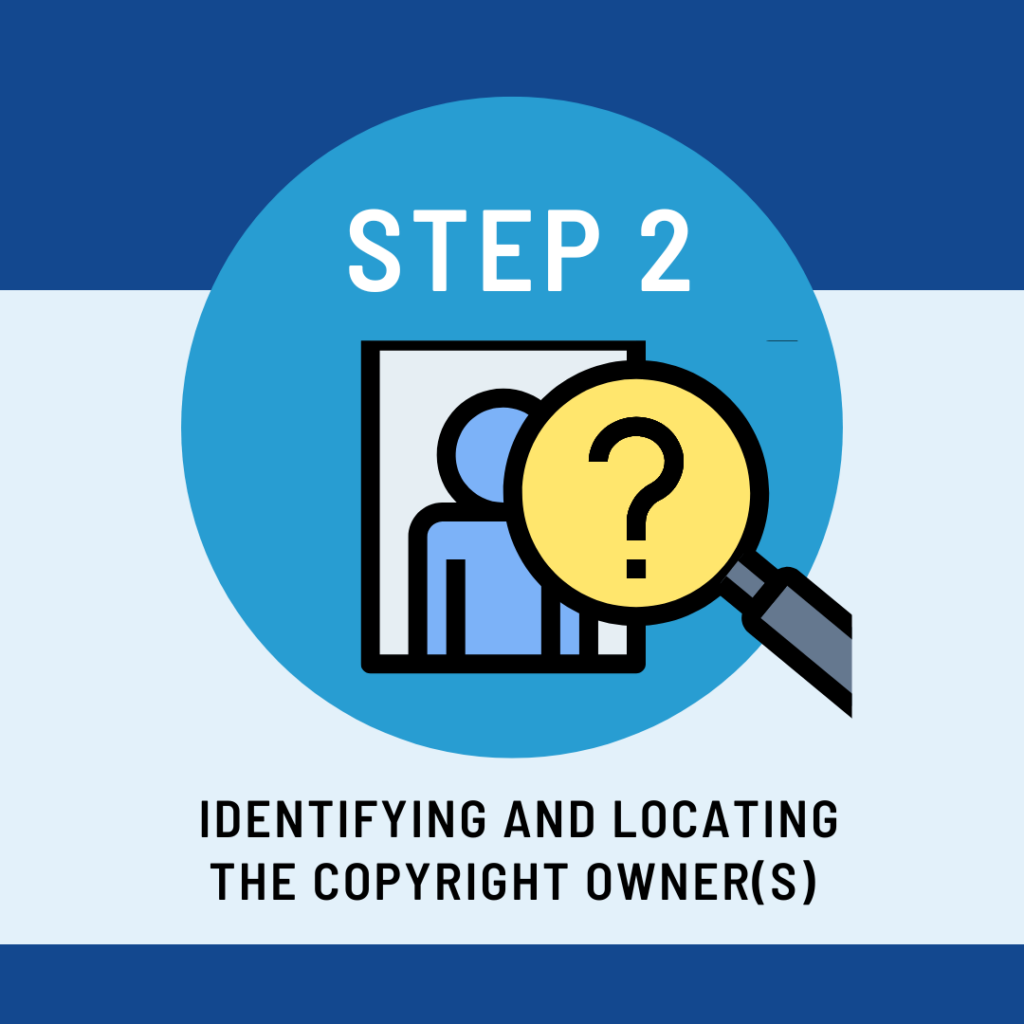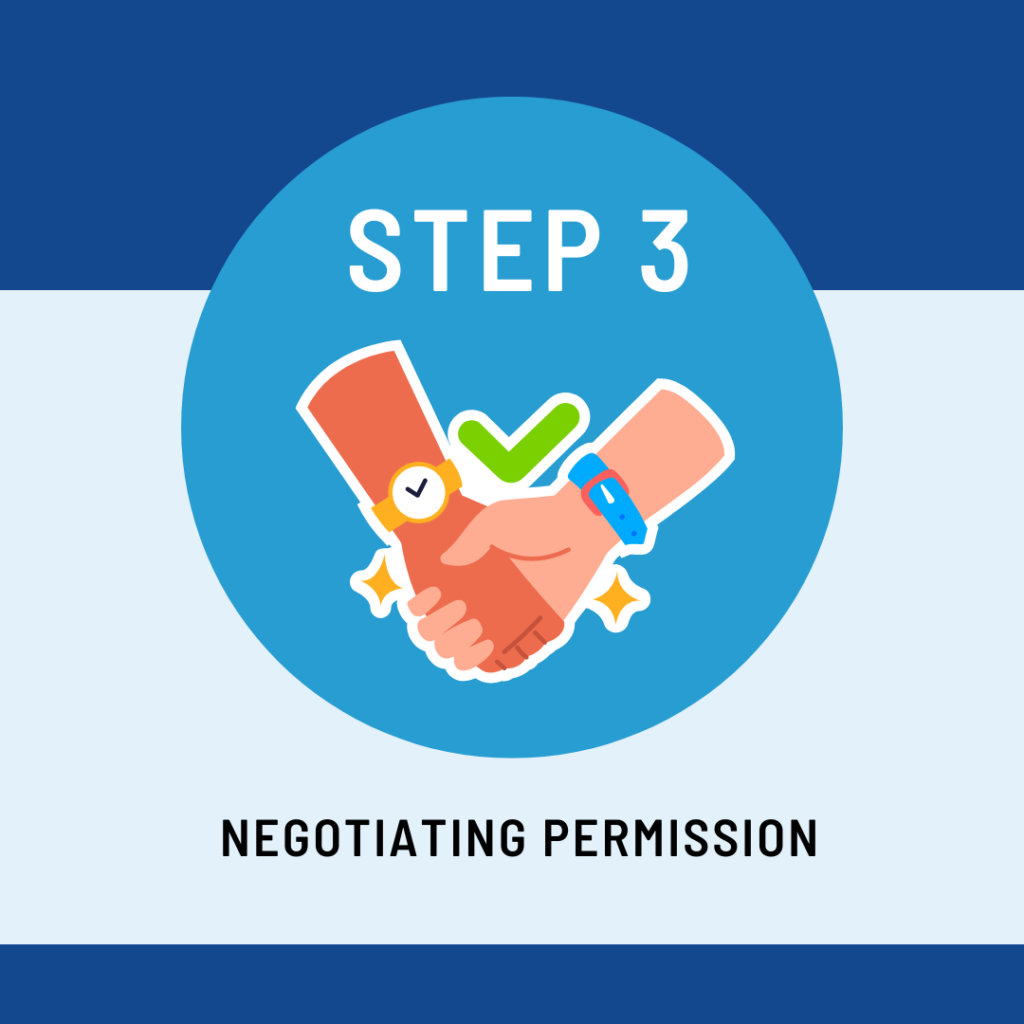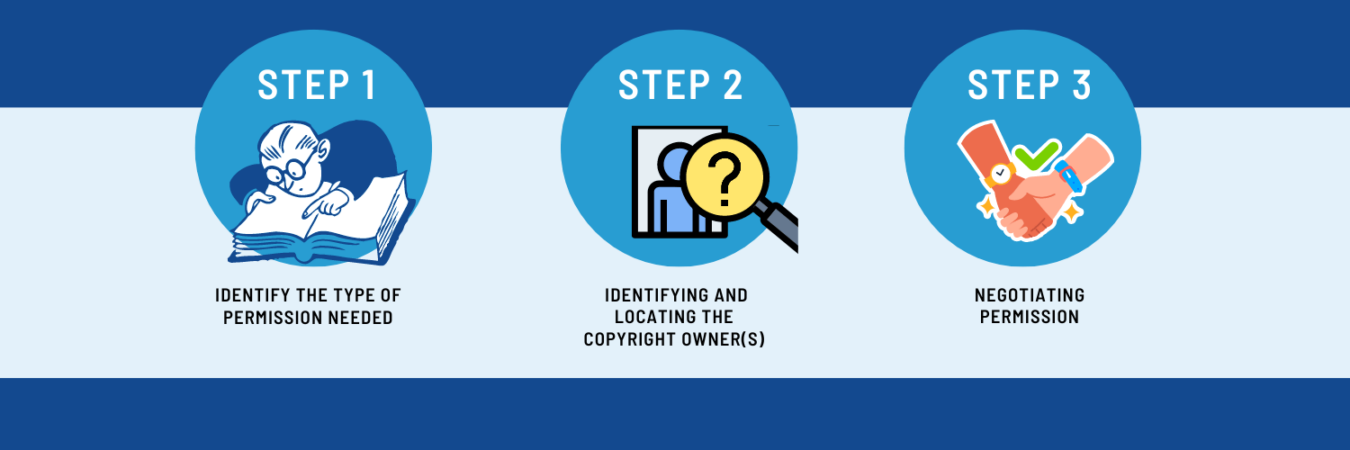How To Get Copyright Permission or a License?
Whether you want to get permission to use a song, license a photograph, or you generally want to use someone’s copyrighted work, you usually need to get permission first. There are certain exceptions, like when the use would qualify for the fair use exception, the use is covered by a statutory license, or the work is in the public domain. But since the question focuses on how to get copyright permission or a license, we’ll generally assume the user has analyzed the exceptions and limitations and determined that permission or a license to use the work is necessary.
To get permission or a license to use a copyrighted work, there are three steps involved:
- Identify the Type of Permission Needed
- Identify and Locate the Copyright Owner
- Negotiate Permissions
Step One: Identify the Type of Permission Needed

A creator or copyright owner of a copyrighted work has certain exclusive rights to that work under the U.S. Copyright Act. These rights include the right to reproduce, distribute, modify, and to publicly perform and display the work. The creator or copyright owner is free to transfer these rights to others and, when doing so, can divide up the bundle of rights however they want.
For instance, a creator might assign the right to publish (i.e., to distribute copies of) his book in the United States to a U.S.
publisher; the right to translate (i.e., modify) the book into Spanish – and distribute the translation in Mexico – to a Mexican publisher; and the right to create a movie (i.e., modify and publicly perform) based on the book to a U.S. movie studio. So, before getting copyright permission or a license you need to know what type of permission or license you need so that you know what to ask for and who to ask.
This is especially important when figuring out how to get permission to use a song. When it comes to music, there are two different copyrighted works: the musical composition (the lyrics and musical score) and the sound recording (what you actually hear on the radio or a streaming service). Depending on how you intend to use the song there may be multiple licensors you need to get permission from. Also, depending on the type of use, there are different types of licenses you may need or even a combination of several licenses.
- Mechanical Licenses would apply if you plan on recording and distributing a cover version of a song. Many of these licenses are administered by the Harry Fox Agency.
- Public performance licenses are issued by performance rights organizations (PROs, like ASCAP, BMI, SESAC, and GMR) which are paid if you plan on performing the music (for example in live performance).
- Synchronization (or “synch”) licenses are required when a musical composition is used as soundtrack in a video, film or TV show. Typically, a music publisher will administer these licenses. You can search the repertories of the PROs, to determine who the music publisher is and how to contact the publisher to obtain a synch license.
- Master use licenses are required when you want to use a particular sound recording. For example, if you want to use a sound recording made popular by a certain recording artist, you will need a master use license. These licenses are typically available from the record labels.
To recap on identifying the type of permission or license you need, ask yourself the following questions: What kind of work is it? What rights do you need from the copyright owner? In what territory do you need those rights? Do you need exclusivity? How long do you need those rights? Who is your intended audience? How are you going to distribute your work? How much are you willing to pay?
Step Two: Identifying and Locating the Copyright Owner(s)

Before discussing some of the basic steps for identifying and locating the copyright owner, you should understand that in many circumstances this process can get very complex. There are professional search firms and scores of articles written on the topic of getting copyright permission or a license for those who are interested in learning more.
As mentioned above, when figuring out how to license music or a song, you can find out copyright ownership information in various
public databases. However, this discussion is intended to help you understand the general process of finding a copyright owner, and to assist you in getting started. But it’s not intended to be a comprehensive or detailed discussion of the topic.
Since only the copyright owner or the copyright owner’s agent can grant permission or a license to use a copyrighted work, the next step is to identify and locate the copyright owner(s). It is important to understand that the copyright owner(s) and the creator(s) may be different people since the creator may have transferred his or her copyright ownership interests to another person or organization.
For example, an author may transfer her copyright to a book publisher or a songwriter may have willed her copyright ownership interests to a relative when she died. It is also possible that copyright ownership may be transferred several times or be split amongst many different people. While you may start out looking for the person who created the work, ultimately you are looking for the copyright owner(s), because it is only that person(s) who can give you the permission you seek.
A side note about locating the copyright owner(s): When we say “locate” the copyright owner, that’s really shorthand for being able to communicate with the copyright owner. If you have a phone number or email address (or some other way to contact the copyright owner) that is sufficient. You do not need to know their home address.
A side note about older works: If you don’t know who created an older work, it’s important to identify the creator because it will help you determine if the term of copyright protection for the work has expired. Since the term for many copyrighted works is measured by the life of the creator plus another 70 years, knowing whether and when the creator died will help you determine when the work will fall or fell into the public domain because of copyright term expiration and thus, whether you need to get permission at all. But note, the copyright law has different terms for older works and for works of corporate origin (often referred to as “works made for hire”).
If you have access to the copyrighted work you want to use, the first thing you should do is check it for:
- a copyright notice;
- any other indication of copyright ownership; and/or
- information that might lead you to the copyright owner (e.g., the author’s or publisher’s name or ISBN number).
Searching the U.S. Copyright Office database is also a good idea. The database is not the easiest to use, but if the work was registered with the Office, the ownership information should be included in the database. Keep in mind that owners are not required to update their contact information with the Office, so the information found in the database may no longer be accurate.
Internet search engines can also be useful. Depending on the type of work you want to use, you can also check the searchable databases offered by different licensing organizations, trade and professional groups, and relevant publishers and other organizations. For further assistance and links to resources, check out the Copyright Alliance “find a copyright owner” page.
Step Three: Negotiating Permission

Once you find the copyright owner, you can contact them to request permission and to begin negotiating rights to use the work. You should understand that the copyright owner does not have to respond to your inquiries. If you’ve located the copyright owner, but get no response to your emails or phone calls, that doesn’t mean you can use the work. Instead, you must get copyright permission or a license from the owner. If they choose to ignore your request, it’s their right to do so.
In addition to terms like exclusivity, territoriality, duration of usage, you’ll want to negotiate payment terms. Payments are usually made in a lump sum or through reoccurring royalty payments. The amount and timing of payments can be based on numerous factors that depend on the parties and the type of usage.
Lastly, whatever agreement you reach with the copyright owner, it’s prudent to ensure that it’s in writing. Having the agreement in writing helps avoid any confusion in the future.

